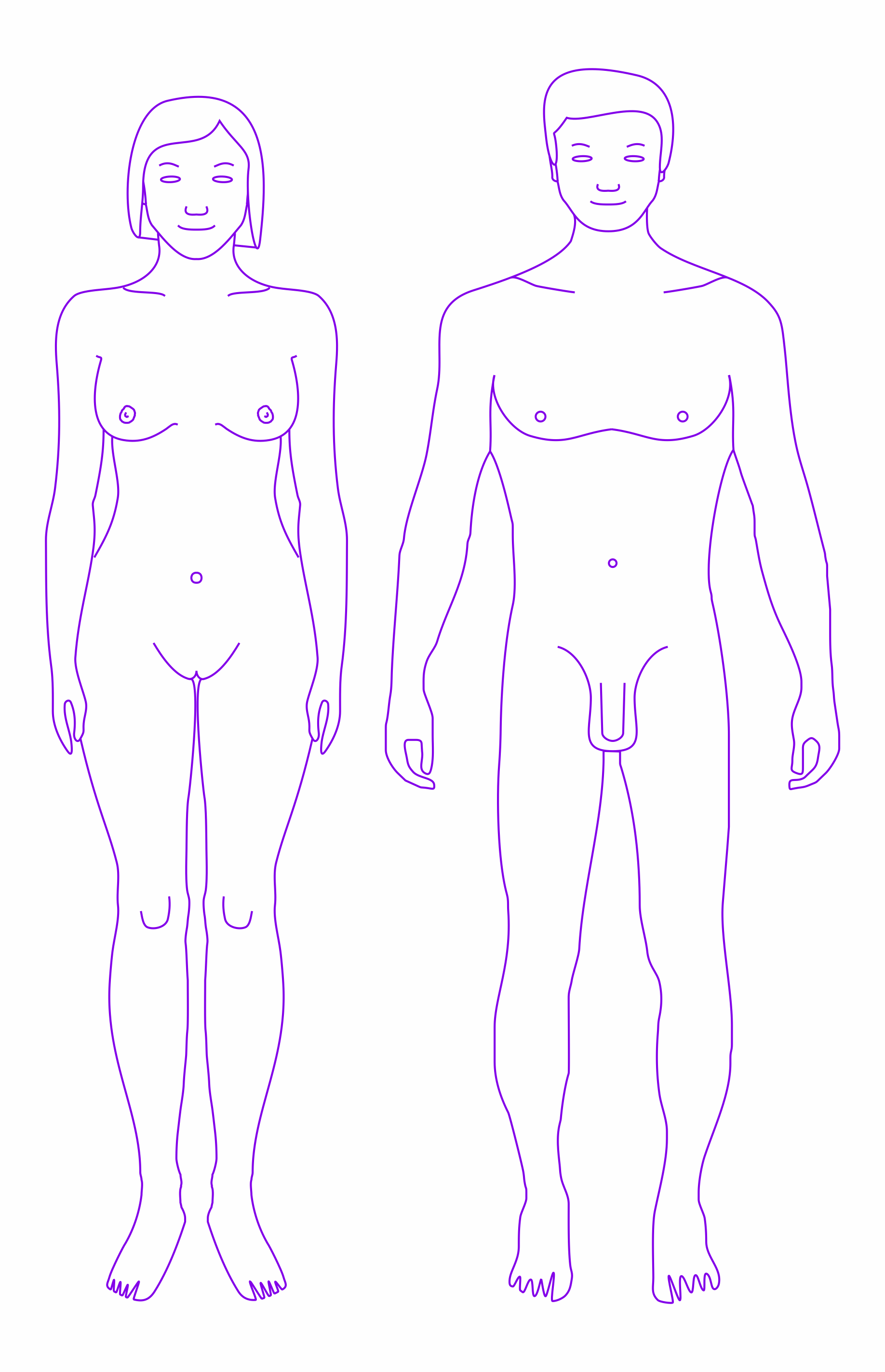Male/Female?
What sex are you?
This is a definition based upon your measurable physical,
genetic and hormonal characteristics. Typically you might be
regarded as female if you have two X chromosomes, breasts
and a vagina. You might be regarded as male if you have X
and Y chromosomes, a penis and testes. It’s too simple to
assume that all people are either male or female. There are
many people born with some or all the characteristics of both
sexes. People who are not clearly male or female might be
called intersex.
What gender are you?
This is a conclusion we arrive at based on how we feel about
our place in society. How masculine and feminine we feel
and are willing to express. We can feel strongly masculine,
feminine, both or neither. We determine our gender identity.
What sexual orientation are you?
Whether we have an interest in sexual activity and how that
manifests is called our sexual orientation. We may prefer to
engage in sexual behaviour with the other sex, same sex,
both or neither. We may prefer a single partner, many or
none. The level of our desire and the practices we find
fulfilling can vary. Sexual orientation is part of our identity.
Gender Identity: Who you go to bed as.
Sexual Identity: Who you go to bed with.
Whatever sex, gender or sexual orientation you are is your business and you are entitled to be accepted as you are
How we develop as sexual beings
When a egg (which carries an X chromosome) is fertilised by a sperm (which can carry either an X or Y chromosome) the resulting embryo will either have XX (female) or XY (male) chromosomes. The growing foetus will not display sex differences until 6 to 7 weeks gestation. At this point the early genitals start to develop. There is considerable correlation between the apparently different components of the adult male and female reproductive organs because of their common origins. The developing genitals express hormones and substances that support the further development of either maleness or femaleness, which includes brain development. Such a complex process can lead to numerous variations as outlined in the previous section.
The next stage in becoming sexually mature is called puberty. In boys the penis and scrotum grows, along with pubic hair, facial hair and growth in stature. In girls the breasts develop, along with pubic hair and changes in body composition. At puberty we become fertile. Men are able to produce and ejaculate sperm, women begin to menstruate on a monthly cycle. Again, this is complex process which can lead to variations, many of which can be treated successfully.
What can go wrong for people with a vulva and vagina?
Pain (or fear of pain) during sex
Inability to allow vaginal penetration (Vaginismus)
Difficulty or inability to achieve an orgasm
Lack of desire, arousal or pleasure from sex
Lack of lubrication in the vagina
Bladder weakness (or fear of bladder weakness)


